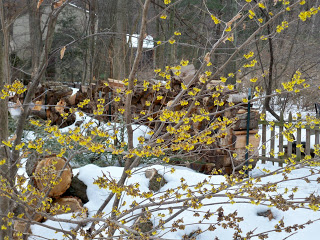Leaves and Sky
Afternoon quickly turns to evening these days, and if I walk a little later than usual, the moon is my companion. It was so yesterday, a pale half, and beside it in the sky, a tangle of contrails.
The balmy air, the early evening and the usual group of dog walkers and fishermen out in Franklin Farm Meadow. But someone else, too. A woman with a camera stood by the pond and aimed her lens at the sky.
I followed her glance upward, and saw the clouds and contrails mingle in the afterglow. The sky continued to redden as I made my way home. By the time I reached Folkstone, it was a radiant pink. Not unlike the maple leaves that are almost, not quite, at their peak.
